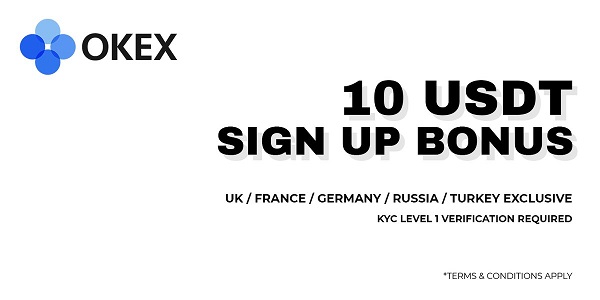
The collapse of Terra’s ecosystem — namely, native coin LUNA and algorithmic stablecoin TerraUSD (UST) — rocked the wider blockchain and cryptocurrency ecosystem. Not only did Terra-ecosystem tokens (such as Anchor’s ANC) collapse in value, but the widespread fear, uncertainty and doubt sent market-leading cryptocurrencies Bitcoin (BTC) and Ether (ETH) below $27,000 and $1,800, respectively, on some exchanges.
As of the time that I’m writing this article, the cryptocurrency market still hasn’t recovered — even if Terra’s contagion has been mostly contained.
Related: What happened? Terra debacle exposes flaws plaguing the crypto industry
A huge blow to industry confidence
Crypto market participants — and especially those involved with LUNA and UST — were wiped out in the collapse of the two assets. For people who were staking the supposedly safe “stablecoin” tenuously pegged to the dollar to earn interest, the UST death spiral was absolutely brutal. Not just hedge funds, but regular individuals lost a lot of money. In some cases, they lost their life savings.
Unfortunately, most regular users (and even some of the hedge funds) were unaware of the risks involved with staking algorithmic stablecoins, despite a history of experimental failures on the algo-stable front and no successful implementations.
Regulators took the bait
Regulators were quick — almost too quick — to use Terra’s dramatic unwinding as an example of why stablecoin (and decentralized finance) regulation is required. United States Treasury Secretary Janet Yellen was quick to mention the event in a Congressional hearing of the House Financial Services Committee on the Financial Stability Oversight Council’s Annual Report to Congress, where she requested lawmakers develop a “consistent federal framework” on stablecoins in an effort to address risks.
Related: DeFi: Who, what and how to regulate in a borderless, code-governed world?
Yellen’s comments are relatively tame when compared to Senator Elizabeth Warren’s, who has repeatedly lambasted decentralized finance (and, by and large, crypto) as an industry run by “shadowy super coders” and criminals. The lawmaker also recently wrote with Senator Tina Smith that “investing in cryptocurrencies is a risky and speculative gamble,” among other things. Reading between the lines, Terra’s collapse is throwing fuel on Congressional crypto critics’ fires.
The picture being painted by some lawmakers — and certainly not just by those in the U.S. — is that the crypto industry is a dangerous place for people to invest their money. They often cite a lack of regulations, user protections and risk-mitigation systems (when not busy falsely stating its primarily used by criminals).
However, this painting isn’t exactly a realistic one.
The role of CEXs in the risk management and user protection
The old “Wild West” days of the cryptocurrency industry are long-gone — at least, in the centralized exchange (CEX) space. Many advanced trading platforms with centralized order books do, in fact, provide safety nets and risk-mitigation measures with the sole purpose of protecting their users from severe market volatility.
As an example, in the wake of the crypto market collapse around LUNA and UST last week — which was devastating for so many crypto investors and traders — OKX stood out as cryptocurrency exchange that was able to protect its customers from the brutal effects of the meltdown.

I’ll explain how that worked — OKX’s risk-management system accomplished this by first noticing the price volatility of LUNA and sending an email alert to all investors who were staking UST on OKX Earn, the exchange’s crypto-earning aggregator platform that includes DeFi earning offerings. Over two phases, OKX released over 500 million UST belonging to over 9,000 investors. The price of UST during these two phases was $0.99 and $0.8. OKX also notified Earn users that their UST had been released from staking.
Related: Risk management in crypto: Aka ‘the art of not losing all your money’
Releasing/unlocking investors’ UST from being staked via OKX Earn gave investors a chance to avoid further loss on their UST, which failed to maintain its peg to the dollar.
Why risk management matters in crypto
The Terra collapse and wider effects on the cryptocurrency market demonstrate why crypto exchanges need advanced risk management systems — especially when providing access to decentralized finance (DeFi) protocols offering favorable yields. The response of OKX’s risk management system, which gave traders a chance to be protected by the effects triggered by the severe volatility in the markets, highlights the benefits of using a centralized exchange platform for “doing DeFi.” Instead of “going it alone,” so to speak, and staking on Anchor or other protocols, utilizing a CEX’s offerings may offer user protection and risk mitigation if and when things go wrong for the protocol in question.
Of course, there must be a balance between the founding values of crypto — independence, decentralization, freedom, “trustless” security — and risk mitigation for people and companies who want to invest in, earn or trade crypto. At the end of the day, we all want everyone to have safe and independent access to the ever-growing world of crypto. However, not everyone is ready (or even wants) to take on all the risks themselves.
Centralized exchanges still have a major role to play in facilitating safer access to decentralized finance through advanced risk-mitigation systems. As more and more new people enter the exciting world offered by blockchain technology, we can provide guidance, expertise and risk-mitigations to help ensure that — at the end of the day — they stick around.
This article does not contain investment advice or recommendations. Every investment and trading move involves risk, and readers should conduct their own research when making a decision.
The views, thoughts and opinions expressed here are the author’s alone and do not necessarily reflect or represent the views and opinions of Cointelegraph.
Lennix Lai is the managing director of OKX. He leads the business strategy and operations for OKX, internationally. Before joining OKX, Lennix served at JP Morgan, AIG and Cash Financial Services Group. With 15 years of experience in the worlds of financial services and fintech, Lennix plays a key role in OKX’s transformation from a standard centralized exchange into the largest hub for DeFi services, nonfungible tokens and blockchain gaming — as well as crypto trading.





Be the first to comment